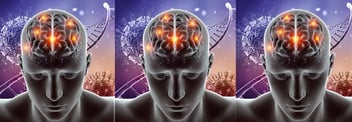Americans In Pain and Addicted: Untangling the Opioid Crisis
- Home
- Blog

Part Two: Killing us Softly
Jeff first came in to see me because his wife, Beth, had twisted his arm. Sound familiar? Beth was so fed up with his mood swings and angry outbursts, she told him that if he didn’t get help, she was going to file for divorce. According to Beth, Jeff used to be the life of the party: a live-life-to-the-fullest type of guy who spoke a mile a minute, reveled in spontaneity, and wasn’t afraid to take risks. Some time prior to our first meeting, Jeff injured his back in a work-related accident. According to Beth, he has never been the same since. His doctor prescribed bedrest and Oxycontin, but the pain persisted—and so did his use of the prescription meds. Nine months after the injury, Jeff became quite depressed. His doctor prescribed him Zoloft, which worked at first, but soon left him prone to moodiness, irritability, and those angry outbursts that Beth would come to know all too well. However, he continued to take the Zoloft as well as the Oxy. Without realizing that perhaps the painkiller was part of the problem, Jeff escalated his use of the Oxy to try to cope with his emotional suffering. By the time Jeff and Beth came to see me, Jeff was in a bad way. He would rage at Beth and their two children, who would run away from him in tears. On several occasions he had come close to striking them, and Beth, too. This immensely likeable man had become a monster.In desperation Jeff pleaded with me to help him. In a particularly poignant moment he asked, “Am I a hopeless case?” He was in such deep emotional pain, you could almost feel it in the room. I felt really sad for Jeff and his entire family. He (and they) had become a victim of one of the most serious epidemics sweeping our country in a generation: Opioid addiction.
Here’s the shocking truth: Opioids are projected to kill roughly half a million people across the country over the next five years. According to public health experts, nearly 100 individuals die every day from the drugs, and this number is set to spike at about 250 per day. One article helps to contextualize these numbers: 500,000 is the size of an average American city like Baltimore, Sacramento, or Albuquerque. In five years, an entire city’s worth of people will have suffered from a highly preventable cause of death. This is a nationwide crisis, one which you can read about almost daily in the local papers. But reporting on this issue is not enough. It’s time mental health professionals and related practitioners step up and start raising their voices to say: This is not okay.
Despite the constant news coverage, so few of us truly understand what’s causing this epidemic. I bet if you were to go into your office tomorrow and ask your coworkers to make a list of drugs that qualify as opioids, you’d hesitate to come up with just one. You may even have opioid medication in your medicine cabinet right now, without knowing it! I don’t say this to point fingers, but rather to make an important point: People in my line of work know this addiction intimately, and there are simply too few of us coming to the public to explain the problem and emphasize that there are solutions that are proven to work—if only we could reach the folks who needed them most.
The numbers are frightening, but here’s what psychiatrists like me know: addiction is only the tip of the iceberg. Like so many others in this country, Jeff’s addiction was only the beginning of his underlying issues. My technique with every single patient who comes through my door is to treat the whole person (under what is known as the biopsychosocial model), and in terms of our work together, and through our work together, it became clear that Jeff had an underlying bipolar condition, which can be exacerbated by drugs like Zoloft and Oxy (both can be epigenetic triggers of severe mood swings). Indeed, the meds that had been intended to make him whole were causing him to fall apart. To truly begin a healing process, we needed to address all the pieces of the puzzle. I immediately referred Jeff to Dr. John Carr, a board-certified addiction psychiatrist, who began working with Jeff on his addiction to Oxy with the help of medication like Suboxone. Dr. Jay Greenstein, who works at a chronic pain rehabilitation program in our region, engaged his staff to work with Jeff to finally fix the continuing issues with his back. Meanwhile, I tapered Jeff’s Zoloft prescription and got him on a different medication to stabilize his moods. In addition, I had uncovered a thyroid imbalance, and deficiencies in B and D vitamins, all of which we corrected to further improve his condition. In talk-therapy, we began to dive into issues that fed into Jeff’s addiction: he had recently turned 40, and felt bereft that he was not a better husband and father, and that he was not further along in his career.
I believe you cannot fully address any emotional issue until you intimately understand every aspect of it: from the underlying causes to the specific pain points within. Throughout this series, I want to help you come to understand the ins and outs of the opioid crisis, not only in order to gain a better understanding of one of the most important issues of our time, but to demonstrate how each of us can fall prey to addiction—and that there is a way out. With the help of patient stories like Jeff’s and expert analysis and insight from my team at Potomac Psychiatry, in future blogs we’ll dive even further into the opioid crisis headfirst, discussing what opioids are, how they affect us, who is susceptible, and how the crisis came to become one of the worst in history.
Today, Jeff’s mood is stable, and he is back at work and largely pain-free. He is beginning to love life once again. He found his way towards wholeness through a holistic treatment process that left no page unturned. Opioids and addiction don’t have to become a death sentence—there is help and there is hope, if only you know where to look. And how to look. Insist upon being evaluated and treated as a whole person, under the biopsychosocial model. I hope you’ll continue to join us in the weeks ahead in learning more.
Like Jeff, your mood or anxiety may be adversely affected by a hormone imbalance; or vitamin or other deficiencies. Want to learn how to uncover these conditions and feel better quickly? Read my mini-book that will guide you on uncovering the biologic causes of your depression or anxiety.
Related Information
- Learn about Genetic Testing
- Learn about Potomac Psychiatry
- Meet Our Doctors
- Contact Potomac Psychiatry


